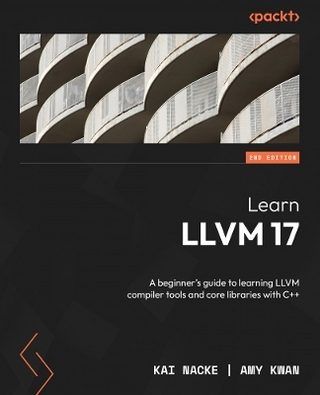
The Mechanics of Objects and Object Systems
An Experimental Approach
Seiten
2020
cefischer Buchverlag e.Kfr.
978-3-944037-63-9 (ISBN)
cefischer Buchverlag e.Kfr.
978-3-944037-63-9 (ISBN)
- Titel wird leider nicht erscheinen
- Artikel merken
Following an experimental approach, this book explores the anatomy of abstract data types, objects, and the very mechanisms their innermost nature gives birth to. Step by step and building on a set of simple questions and answers, the runtime characteristics of objects are reveiled on top of which object systems begin to evolve. Object-oriented features like encapsulation, inheritance, and polymorphism thus become clear and pave the way to further studies: of classes, class metaidentities, and connected processes such as instantiation, dynamic binding, and module linking. New topics are explored and discussed by means of simple experiments which are conducted at the lowest programming level possible so to avoid any biasing of high-level environments and programming languages. Short assembly listings that can be set into action on any PC show how to build a simple basic runtime environment in which objects can be brought to life. Besides, the book describes the basics of interobject communication and, at the same time, is an introduction to object-based programming, interobject communication protocol authoring, and object cell management. Runtime aspects such as real-time event processing and data flow, module protection, automatic memory management, error detection, and other system-level features are important issues all experiments take into consideration right from the start. In a short review at the end of the course, advanced topics are discussed and the first hurdle to further studies cleared, namely the development of an object-based programming language and a hardware-protected runtime environment.
As it deals with the mechanisms and very basics of objects and object systems, no special software or runtime environments are required to follow the book except an 80x86 assembler, such as the free NASM, and a PC as a lab machine. Each of the 20 chapters of this book is divided into a theoretical part that defines and discusses one important topic of object-orientedness and object-based programming and its inherent problems; a laboratory part that shows the solutions; and a short review part that discusses the solutions and serves as lead-in for the next chapter. This way, a simple but effective object environment evolves, chapter by chapter, from which more complex solutions can be deduced. No prior object-oriented programming experience is required. Furthermore, no dependencies on operating systems, runtime packages, and development environments are involved in the studies.
It is this generic character of the book that makes it truly general purpose and thus basic reading for any novice programmer interested in object-oriented software construction and language design from scratch. For the experienced programmer, it is an ideal introduction to object-based programming and will serve as a red thread to follow during everyday work as a prolific writer of quality software.
As it deals with the mechanisms and very basics of objects and object systems, no special software or runtime environments are required to follow the book except an 80x86 assembler, such as the free NASM, and a PC as a lab machine. Each of the 20 chapters of this book is divided into a theoretical part that defines and discusses one important topic of object-orientedness and object-based programming and its inherent problems; a laboratory part that shows the solutions; and a short review part that discusses the solutions and serves as lead-in for the next chapter. This way, a simple but effective object environment evolves, chapter by chapter, from which more complex solutions can be deduced. No prior object-oriented programming experience is required. Furthermore, no dependencies on operating systems, runtime packages, and development environments are involved in the studies.
It is this generic character of the book that makes it truly general purpose and thus basic reading for any novice programmer interested in object-oriented software construction and language design from scratch. For the experienced programmer, it is an ideal introduction to object-based programming and will serve as a red thread to follow during everyday work as a prolific writer of quality software.
| Erscheinungsdatum | 01.06.2017 |
|---|---|
| Verlagsort | Bergen |
| Sprache | englisch |
| Maße | 180 x 240 mm |
| Gewicht | 860 g |
| Einbandart | gebunden |
| Themenwelt | Informatik ► Theorie / Studium ► Compilerbau |
| Informatik ► Weitere Themen ► Hardware | |
| Schlagworte | Assembler • Distributed Computing • Embedded Technologie • Programmieren • Programmiersprachen • Softwaredesign |
| ISBN-10 | 3-944037-63-4 / 3944037634 |
| ISBN-13 | 978-3-944037-63-9 / 9783944037639 |
| Zustand | Neuware |
| Haben Sie eine Frage zum Produkt? |
Mehr entdecken
aus dem Bereich
aus dem Bereich
a beginner's guide to learning llvm compiler tools and core …
Buch | Softcover (2024)
Packt Publishing Limited (Verlag)
49,85 €


